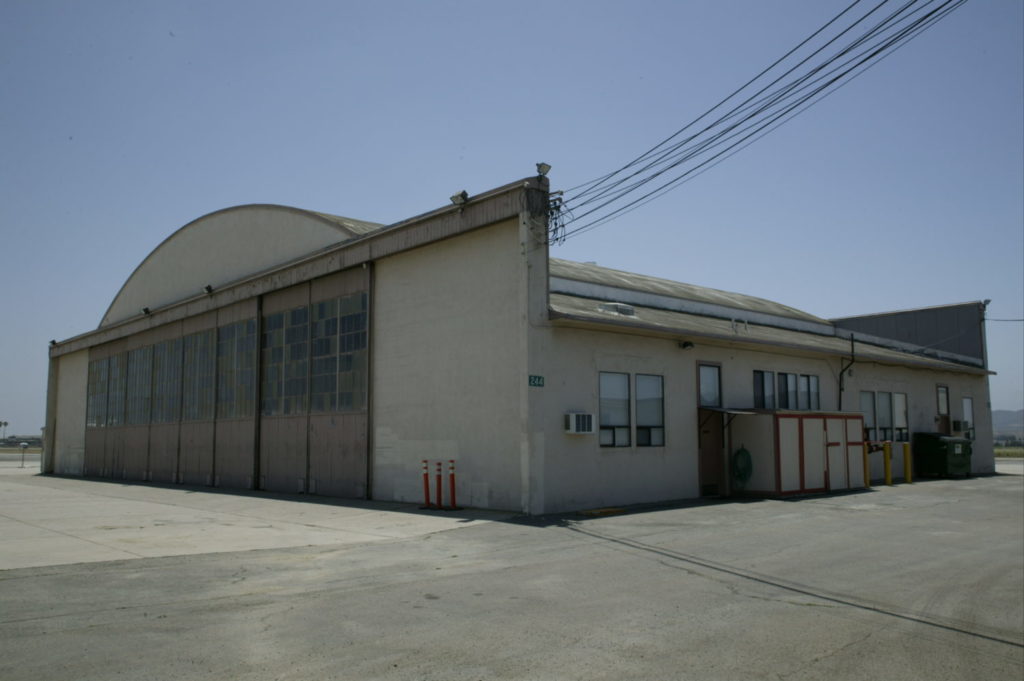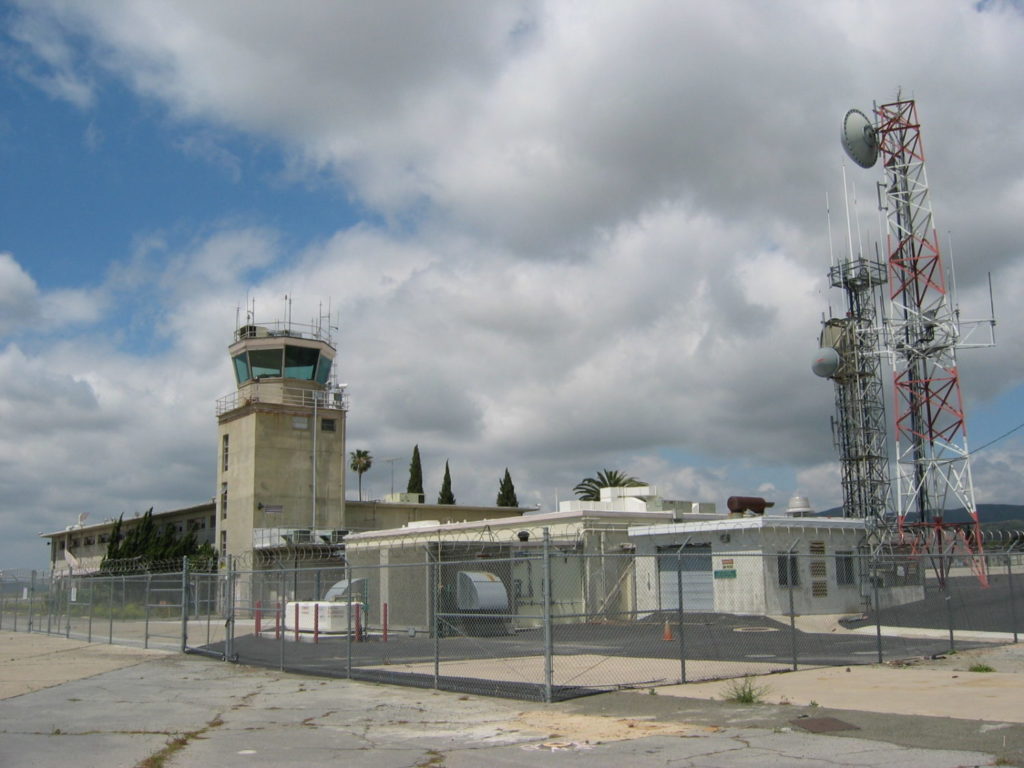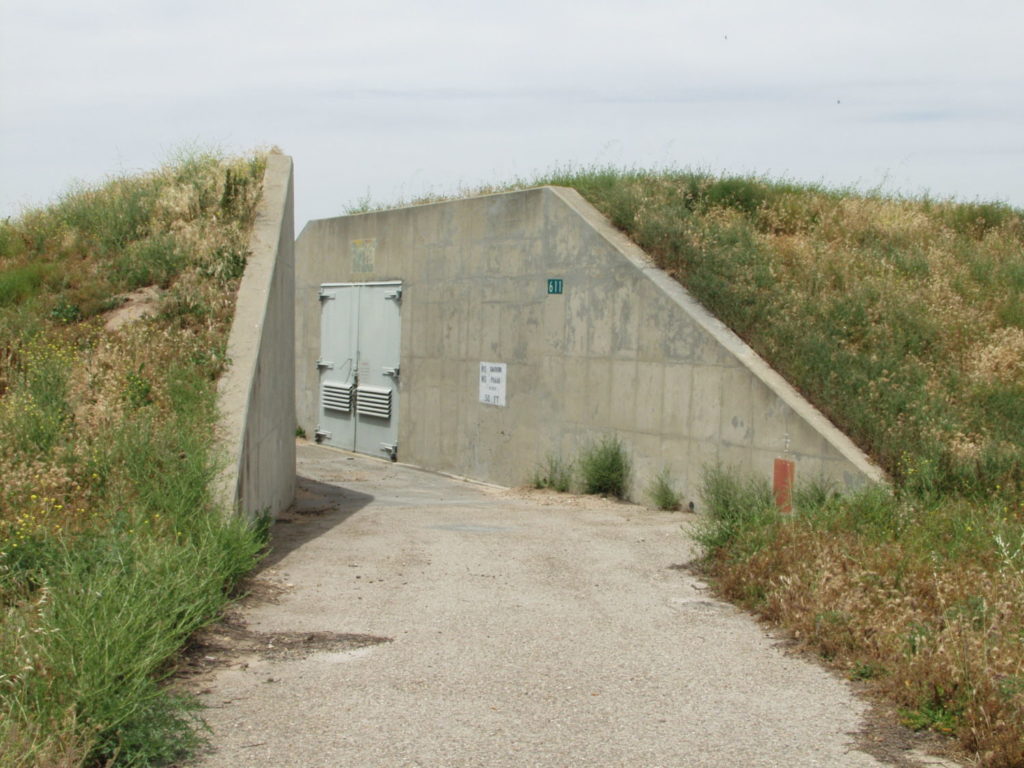The Great Park Gallery, on the campus of the Orange County Great Park, has a special relationship with six photographers who call themselves the Legacy Project. In 2003, these inveterate picture-takers resolved to capture photographs of the former Marine Corps Air Station El Toro, along with photo tributes to its long legacy, as it transitioned into the Great Park.
They continued shooting photos of the burgeoning park for more than a decade, ultimately capturing more than 400,000 images. Since 2011, the Great Park Gallery has mounted several exhibitions featuring Legacy Project images. Many of these photos demonstrate the project members’ expertise as photographic artists, with each working in his own inimitable style.
Yet this “MCAS El Toro” exhibition is comprised of some of the earliest Legacy Project photos, all taken in 2003. These images documented the then still-standing Marine Corps buildings and structures, many constructed during and after World War II — decades before the base was decommissioned in 1999, and construction of the Great Park began.

(Clayton Spada)
Many of these buildings were simple in design and nondescript, catering to basic needs, while others were more complex, serving the requirements of strategic military missions. Further, as the photos show, most of the structures had clearly deteriorated since the marine station was decommissioned.
Some of these photos, including those of aircraft hangars, airstrip control towers and bunkers storing weapons and bombs, reveal their functions. There are also mundane offices and barracks, with their doors and windows shut. Others structures contain ambiguities, with their curiously positioned and sized windows and doors. The viewer might like to enter and explore these buildings to find out what functions they served.
In introductory material to the El Toro exhibition, Tyler Stallings, director, Frank M. Doyle Arts Pavilion, Orange Coast College, writes: “The original buildings were built with typical military functionality and current need in mind, that is, aesthetics and longevity were not at the top of the list of requirements, most likely. The benefit of the Legacy Project’s efforts, as demonstrated with this exhibition, is that their artistic impulse created an archive that has generated a dialogue between the present-day park and the absent military base of the past.”
In fact, there is a film noir quality to these photos, as the simple, functional buildings, offset by dark shadows, ominous skies and/or decaying vegetation, possess a feeling of mystery, along with a longing for the past.

(Jacques Garnier)
In 2006, the six Project members, along with 400 volunteers, created “The Great Picture,” the world’s largest photograph. They shot the 3,375-square-foot photo from a camera obscura, which was retrofitted from a jet fighter hangar at the closed marine base. They made their 35-minute exposure through a six-millimeter aperture onto a single seamless muslin canvas, and processed the photograph in an Olympic-size pool turned into a giant developing tray. The giant photograph, three stories high by 11 stories wide, portrays the base’s control tower, structures and runways, with a backdrop of the San Joaquin Hills. Guinness World Records certifies the camera obscura as “The largest pinhole camera.”
The Great Picture’s enormous custom-made shipping crate, with the picture in it, is also displayed at the El Toro exhibition, along with a negative reproduction of its image.
A Bit of History
When the six Legacy Project members — Jerry Burchfield, Mark Chamberlain, Jacques Garnier, Rob Johnson, Doug McCulloh and Clayton Spada — first prowled the 4,700-acre base in 2003, they photographed the remnants of life there, of a place that had been occupied by hundreds of thousands of marines and their families for decades. These remnants included officers’ homes, backyards, playgrounds, theaters and a shopping mall.
As Chamberlain once explained, “As with most photographers, we are insatiable alley walkers and there were innumerable nooks and crannies to explore in a territory normally off limits to civilians. It was a shooter’s delight, and this haunting landscape gave us all itchy trigger fingers.”

(Robert Johnson)
In addition to photos of building exteriors at the base, Burchfield’s early images concentrated on the presence of the military people who served there, revealing footprints painted onto floors, murals and drawings on walls, rooms with furniture strewn about, clothing and toys. Chamberlain’s photos favored outdoor scenes of runways, hangars and Quonset huts. He shot pictures from various angles, at different times of the day, creating aesthetic images. Garnier’s pictures, bordering on the surreal, featured torn drapes and broken blinds as daylight filtered in.
McCulloh’s work explored angled compositions as he involved himself in the images in nearly imperceptible ways. Spada shot runways with striping, cracks and vegetation creeping through. He regarded fading elements as modern petroglyphs, relics of a vanishing society. The most Impressionist images were Johnson’s landscapes. He employed raindrops and fog to create pictures inspired by an earlier time.
Many of the above images, exhibited in museums and galleries over the years, are laboriously archived by Legacy Project members. Perhaps they will display these magnificent pictures as subsequent iterations to their photos in this MCAS exhibition.
Over the years, as Legacy Project members continued to document the transition of the base into the Great Park, they became aware of plans to create elaborate architectural, landscaping and environmental features within the park. Those amenities, as described by New York-based landscape architect Ken Smith in 2009, would include, “sustainability at a large scale, making social spaces that promote community and health, connections to regional identity and a sense of history.”
While many of those plans have been scaled down or scrapped, the Great Park today proudly displays its Carousel, Balloon Ride, Kids Rock and Farm + Food Lab, all of which have been documented by the Legacy Project.
“MCAS El Toro” is on view through May 17. Great Park Gallery, Palm Court Art Complex, Orange County Great Park, Irvine; Thu. & Fri., noon-4 p.m.; Sat. & Sun., 10 a.m.-4 p.m.; free. cityofirvine.org/orange-county-great-park/arts-exhibitions.
Advertising disclosure: We may receive compensation for some of the links in our stories. Thank you for supporting Irvine Weekly and our advertisers.

